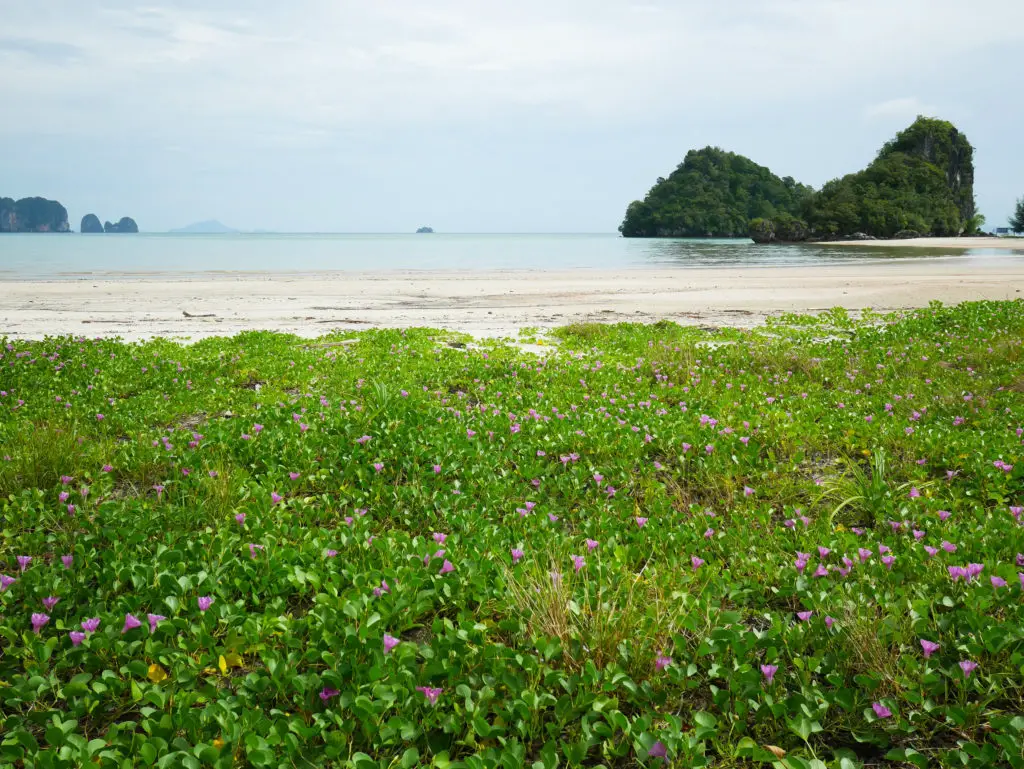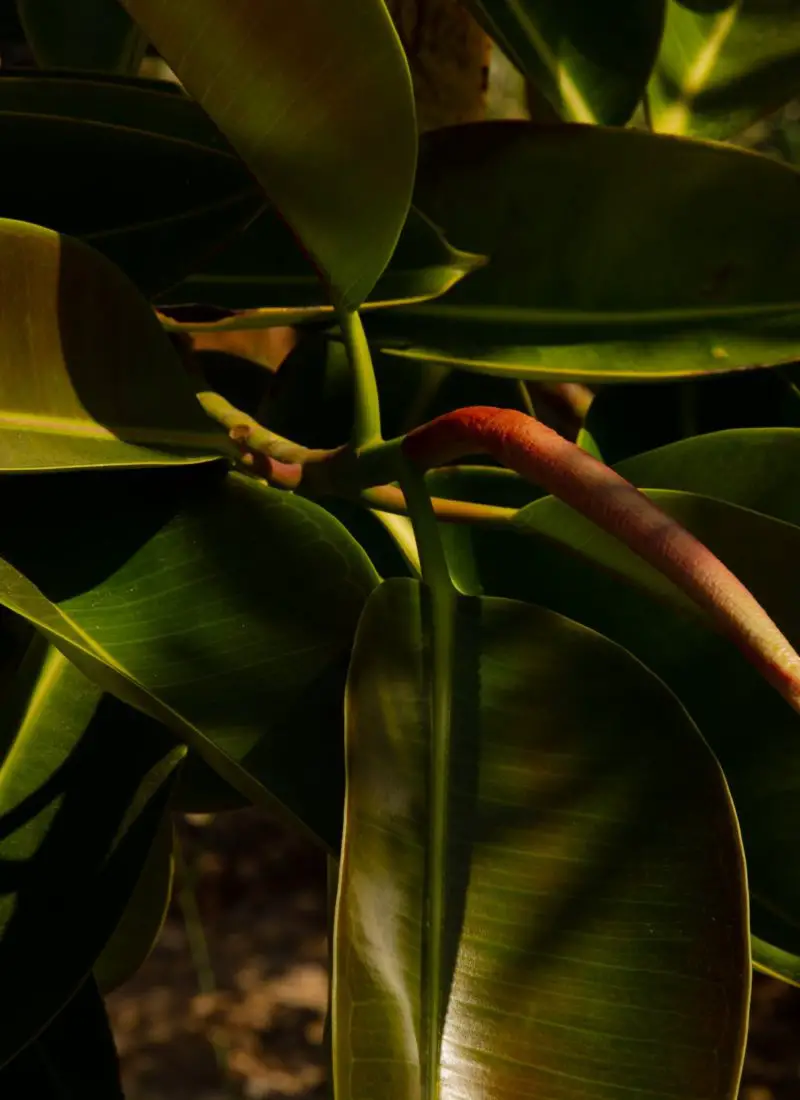
Plants need various mineral salts to provide a well-balanced nutrient level for best growth. However, not many know that this doesn’t mean regular table salt, i.e., sodium chloride. Even so, is common salt good for plants?
Rock salt is harmful to most plants and doesn’t contribute to better growth. It causes drought-like conditions for the plant and disrupts the soil’s composition, leading to compaction. Additionally, high amounts of dissolved salt can lead to an imbalance in nutrient levels.
Below, I elaborate more about salt damage in plants, along with examples of salt-tolerant/loving plants:
(As an Amazon Associate, I earn from qualifying purchases.)
Table of contents
What Is ‘Salt’ to Plants Exactly?

Depending on the context, ‘salt’ can mean a few things when it comes to plants:
- Regular table salt, i.e., NaCl or sodium chloride.
- Epsom salt, i.e., MgSO4 or magnesium sulfate.
- Mineral salts, i.e., any salt derivative of dissolved minerals in the water, soil composition, or fertilizers.
In chemistry, ‘salt’ is the term given to a stable ionic compound after a reaction takes place. Anything added to the plant and broken down becomes mineral salts taken up for growth or nourishing the soil. They exist naturally in water and soil but in almost negligible amounts in comparison to what would cause damage to a plant. Fertilizers, on the other hand, are jam-packed with minerals. This is why it’s possible to cause fertilizer burn in your plants if applied in excess. Yes, mineral salts are good for plants but, always in moderation and the proper dose.
As for Epsom salts, this is only necessary for the plant if it has a magnesium deficiency. It’s been said that it doesn’t matter if you give this in excess. However, it may possibly cause other minerals to be displaced. It’s safer to provide just the required amount per the product label’s instructions. Otherwise, your plant will do fine without it if it’s already healthy.
On the other hand, regular table salt or rock salt can harm plants and even kill them in high doses. Most plants do not appreciate a heavily salted environment unless your plant is salt-tolerant. Too much salt brings up many problems for plants, so…
What Happens When You Give Plants Too Much Salt?

When salt is applied to plants, either in diluted or solid form, the following happens:
- Salt will absorb water from the plant and its soil. This will emulate dry periods for the plant as less water is taken up. Remember that rock salt dissolves easily in water – any droplets will bind immediately with the substance, preventing any moisture for the plant’s needs. Similarly, if there’s too much salt in the soil and plenty of water in the plant, the water will be leached out, causing dehydration. It’s the same idea as preserving things with salt like prosciutto, it sucks all the water out and makes it inhospitable for most living things, unfortunately, your plant is a living thing and this will unalive it.
- High dissolved salt content will cause a mineral imbalance in the plant. Like the Epsom salt problem, you risk other equally essential nutrients being drowned out by the high salt content. This will lead to mineral deficiencies and cause stunted growth, among other problems.
- Sodium accumulation in the soil leads to compaction and significantly reduced drainage. The roots will have trouble getting oxygen from the lack of air pockets and properly expanding in the salty ground. This is not much of a problem in sandy soil, but in loam and clay soil, it causes longer water retention and a tightly-packed soil structure.
- Chlorine toxicity in the plant’s leaves, causing leaf scorching. This may also cause stunted leaf growth, yellowing, and significant leaf loss.
It’s worth noting that rock salt does significant damage when applied directly to the soil. When sprayed on the plants, you also risk drying up the foliage. In some cases, salt residue may even be left behind, preventing the covered leaves from fully photosynthesizing. Excess salt is simply not beneficial to plants at all.
Is salt harmful to plants?
As a whole, rock salt harms plants when applied directly to the soil. It induces dehydration and mineral deficiencies in the plant and affects soil structure. Only salt-tolerant plants have unique traits to thrive in a saltwater environment.
How Do I Save My Salt-Damaged Plants?

There is only one way to salvage your salt-damaged plant – Soak the soil and the plant liberally with water to leach out the salt. It’s best to do this early in the morning to allow the foliage to dry out throughout the day. There is a risk of overwatering your plants during this stage but take it one problem at a time. You want the salt out of the plant and its environment as much as possible, and the only way to do that is to flush it out.
Afterward, observe your plant for a few days to see if it improves. Be careful to only water your plant when needed – do the knuckle test if you need to. Other than that, keep it away from salt, give it the best care you can, & cross your fingers that it’ll recover.
In some cases, it’s reasonably easy to prevent your plants from getting salt-damaged. Here are a few tips to help you out:
- Set up a physical barrier to avoid salt sprays from the road hitting your plants. Alternatively, you can cover them with burlap as well.
- Place salt-tolerant plants in salt-prone areas if you live near the coast. Getting salt tolerant plants makes it easier to enjoy that ocean breeze as you sip on your pina colada under the sun. you won’t have to think about your plants being slowly decimated by salt spray.
- Consider starting a container garden if the soil is unsuitable for in-ground planting. A salt build-up in the soil can cause irreparable damage and raise the pH, rendering it almost obsolete for any plants to grow. You can try to add gypsum to the ground to make it workable. But if you’d rather not, your plants will just have to make do and it may take a few plants until you figure out which ones can put up with the barrage.
Why Can Some Plants Thrive in Saltwater or are Salt-Tolerant?

Certain plants evolved in a salt or nutrient barren environment. While most plants are not salt-tolerant, the native ones growing near and in coastal areas can thrive with no problem. This is all thanks to their very useful traits:
- Waxy cuticle leaf coatings that prevent salt from drying out their leaves.
- Special glands to secrete any excess salt.
- Specific functions inside their stem or xylem vessels to control the flow of salty water intake up the plant.
These plants have a better chance of withstanding if not flourishing in seawater or saltwater environments hands down, survival of the fittest.
Final Words
Regular table salt isn’t good for most plants in high concentration and if a non salt-tolerant plant is exposed too long, it will likely die. Keep the salt away from your plants!! Oh… and Happy planting!
References:
https://www.purdue.edu/hla/sites/yardandgarden/deicing-salts-harmful-to-plants/
https://extension.illinois.edu/blogs/good-growing/2018-11-28-salt-landscape
https://www.canr.msu.edu/news/salt_damage_on_landscape_plants
https://extension.umaine.edu/gardening/manual/tolerance-trees-shrubs-salts-soil/
https://extension.umn.edu/lawns-and-landscapes/effects-deicing-salts-landscapes#resources-2577510
https://s3.wp.wsu.edu/uploads/sites/403/2015/03/epsom-salts.pdf
https://extension.psu.edu/minimize-deicer-damage-with-salt-tolerant-plants
https://extension.umd.edu/resource/chlorine-toxicity





